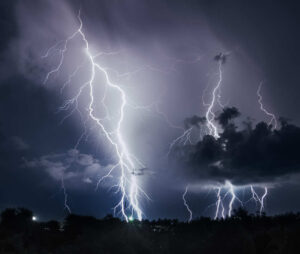Emergency Preparedness: June is National Safety Month
Information provided in part by the National Safety Council
 After the last year and a half, the last thing anyone wants to do is talk about the unexpected. But preparing for disaster is a proactive way to handle natural and man-made events. Having a planned response when you are at home, work, or on the road will pay off should a crisis strike.
After the last year and a half, the last thing anyone wants to do is talk about the unexpected. But preparing for disaster is a proactive way to handle natural and man-made events. Having a planned response when you are at home, work, or on the road will pay off should a crisis strike.
In 2019, 67,504 weather-related events resulted in 570 deaths and 1,746 injuries. According to Injury Facts, heat waves, flash floods, and tropical storms resulted in the most deaths that year,
The National Safety Council has tips specific to each of the following emergencies:
Federal agencies, like the National Oceanic and Atmospheric Administration, the Centers for Disease Control and Prevention, and Ready.gov, are valuable resources for emergency preparedness. It is critical to stay informed through radio, TV, or the Internet during an emergency. In case of cable, electric, or cell phone service interruption, the National Safety Council recommends the following general precautions that apply to many disaster situations:
- Download the FEMA app for resources, weather alerts, and safety tips
- Make sure to have a family communication plan in place; all members of the family should review and practice the plan
- Have all family members and other important phone numbers written down or memorized
- Create an emergency kit for your home, as well as backup batteries and a solar-powered radio.
- Have an emergency kit in your car and at least three days of food and water at home
- Be sure to store all important documents – birth certificates, insurance policies, etc. – in a fire-proof safe or safety deposit box.
- Assign one family member the responsibility of learning first aid and CPR
- Know how to shut off utilities
Workplace Emergency Preparedness Training
An emergency can strike at any time: a natural disaster, a heart attack, an active shooter, a terrorist event. That’s why it’s so important to have employees who can respond quickly and effectively.
The National Safety Council Emergency Preparedness Online Certificate Program can help your employees know how to respond before, during, and after an emergency.
In Your Car
All vehicles should have an emergency supply kit in the trunk and should be checked every six months. You should replace expired items to keep your kit up to date. Vehicle emergency supply kits should include:
- Jumper cables
- A properly inflated spare tire, wheel wrench, and tripod jack
- First aid kit with gauze, tape, bandages, antibiotic ointment, aspirin, a blanket, non-latex gloves, scissors, hydrocortisone, thermometer, tweezers, and instant cold compress
- Tool kit and/or a multipurpose utility tool
- Flashlight and extra batteries
- Reflective triangles and brightly colored cloth to make your vehicle more visible·
- Nonperishable, high-energy foods, such as unsalted nuts, dried fruits, and hard candy
- Drinking water
- Reflective vest in case you need to walk to get help
- Car charger for your cell phone
- Fire extinguisher
- Compass
- Duct tape
- Rain poncho
Additional items for cold weather include a snow brush, shovel, windshield washer fluid, warm clothing, cat litter for traction, and blankets.
It’s also a good idea to keep family and emergency phone numbers, including your auto insurance provider and a towing company, in your phone.